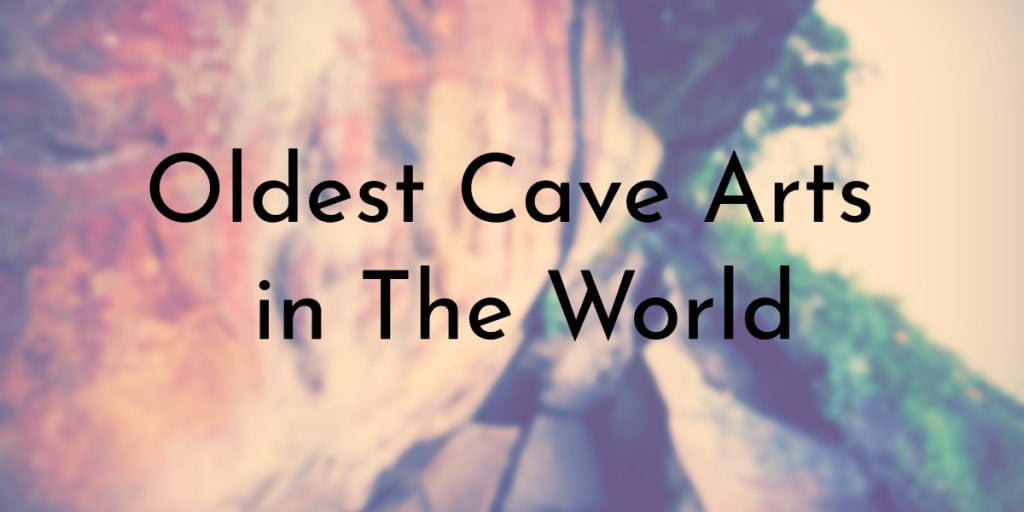When you think of art, the image that might be conjured in your head may be of an artist at an easel, a display at a gallery, or even digital animation. But before all these forms of art existed, humans still found ways to express their creative tendencies on the walls of their homes. Here are some of the world’s oldest cave art!
7. Nawarla Gabarnmung
Age: 24,000 years old
Oldest type of art: Charcoal drawing fragment
Location: Arnhem Land
Country: Australia
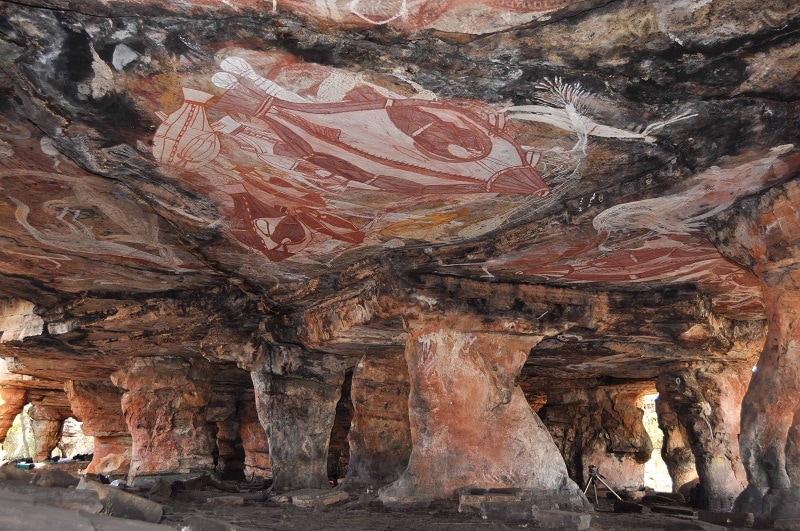
The paintings in famous rock site Nawarla Gabarnmung are the oldest in Australia. The very oldest is a charcoal drawing etched on a rock fragment found during the rock shelter’s excavation. The rock shelter is an Aboriginal archaeological and rock art site, and its name can be translated to “hole in the rock”, “valley open from the centre”, or, simply, “passageway”.
Paintings within this cave are all carbon dated, and fully intact paintings from within the shelter include paintings of fish, wallabies, crocodiles, the Barramundi, humans, and even spiritual figures. Most drawings can be spotted on the ceiling of the shelter, though some are scattered throughout the walls and pillars.
6. Coliboaia Cave
Age: 35,000 years old
Oldest type of art: Figurative painting
Location: Bihor County
Country: Romania
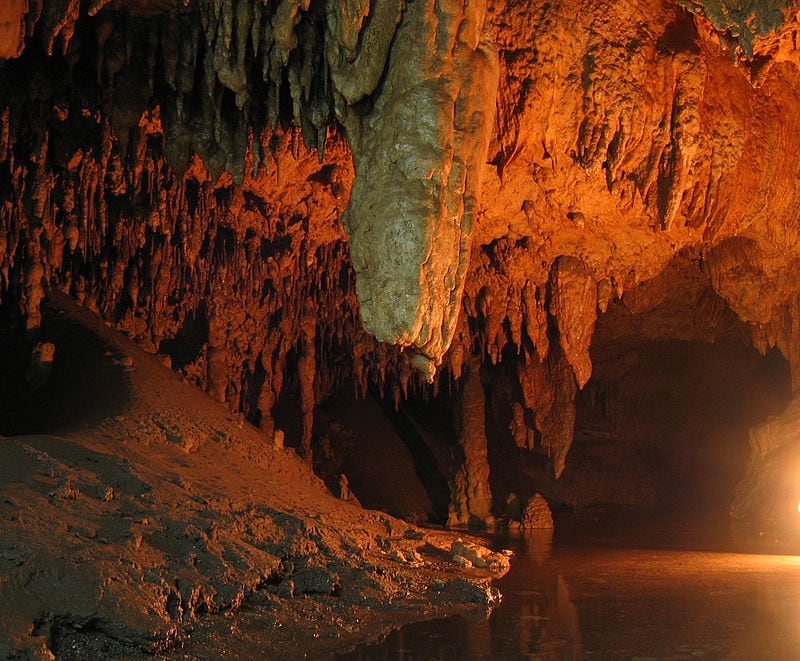
Sitting in Apuseni Natural Park, Coliboaia Cave houses Central Europe’s oldest cave paintings, dating as far back as 35,000 years BP. It’s estimated that the Aurignacian and Gravettian cultures may be responsible for the cave’s art as their creation would have been consistent with these cultures’ presence during the Paleolithic period.
The most known paintings within the cave are the drawing of a bison head on the right wall of the Art Gallery and a drawing of a rhinoceros head on the left wall.
The Art Gallery in the cave is seven meters above the ground, with most paintings appearing on the ceilings. The paintings are primarily of animal heads and are mainly done in black charcoal, though some half-drawings of humans and other unknown paintings are present.
The cave was first spotted in 1900, but only fully investigated in 1981 by Gabor Halasi, and the paintings were only discovered in September 2009. From then on, the cave became protected by the Romanian Federation of Speleology.
5. Chauvet-Pont-d’Arc Cave
Age: 37,000 years old
Oldest type of art: Figurative painting
Location: Ardèche
Country: France
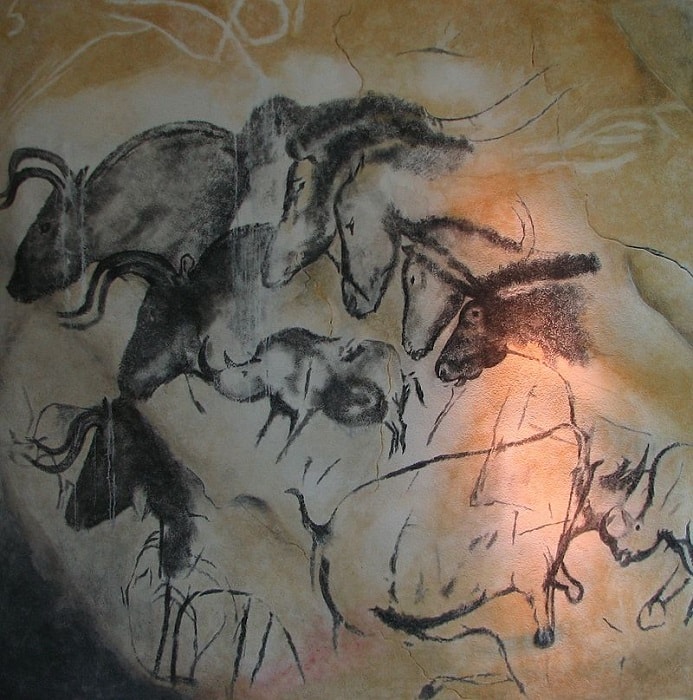
The Chauvet Cave is arguably the most significant prehistoric art site in the world thanks to its large collection of the best well-preserved cave paintings on earth. It was first explored by three speleologists, and one of them was Jean-Marie Chauvet, who the cave was named after.
The age of the paintings in the cave has been disputed over the years since its discovery in 1994, but a 2016 study suggests that two periods of creation existed in the Chauvet Cave, one occurring from 37,000 to 33,500 years ago and the other from 31,000 to 28,000 years ago. These dates were discovered using radiocarbon dating.
Within the cave are hundreds of animal paintings of at least 13 different species of animals, both herbivorous and predatory, that are almost never found in other cave art of that time. Other paintings include red ochre hand stencils, abstract lines and dots, a “Venus” figure of a vulva and legs, and two unidentifiable images that some believe to have ritual or magical aspects. There is also a painting that appears to be of a volcano erupting lava, which is the earliest known depiction of a volcanic eruption.
Apart from cave paintings, other findings within the cave include the remains, markings, and fossils of many different animals, some that are extinct today, and human footprints – sometimes found alongside animal prints. The cave has World Heritage status as of the 22nd of June, 2014, granted by UNESCO.
4. Timpuseng Cave
Age: 40,000 years old
Oldest type of art: Non-figurative painting
Location: Sulawesi
Country: Indonesia
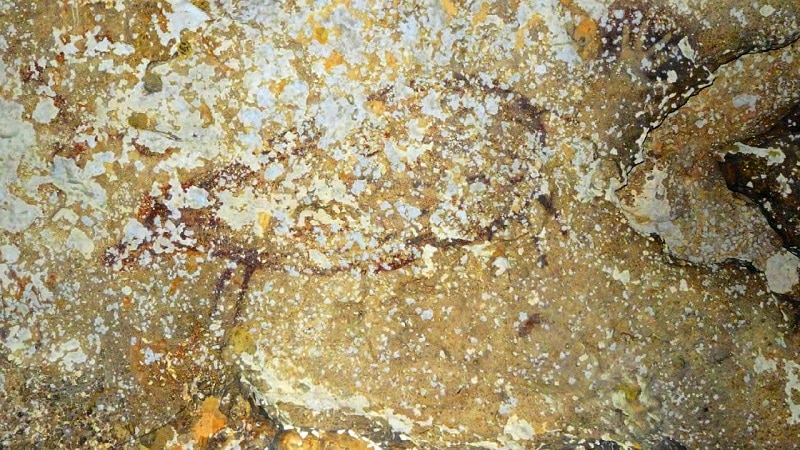
Only discovered recently, the cave paintings in Timpuseng Cave, Indonesia, range in periods, with different eras of crafting occurring within its walls. Originally, the cave art in Timpuseng Cave was thought to only be 12,000 years old, but recent studies into the mineral crust covering the paintings has changed that belief.
The cave houses the world’s oldest animal cave painting – a depiction of a babirusa, or pig-deer, which is dated at 35,400 years old.
Apart from its animal and figurative etchings, Timpuseng Cave is also home to some of the world’s oldest discovered cave paintings in general. Non-figurative paintings of disks made from blowing paint onto the wall were dated at 40,000 years old by Indonesian and Australian scientists, who estimated this age based on the ages of the stalactites that formed on top of the paintings.
Hand stencils were also found on the wall dating about 39,900 years old, making them the earliest hand stencil cave art in the entire world. Meanwhile, other paintings in the cave ranged from 27,000 years old to 13,000 years old.
3. Cueva de El Castillo
Age: 40,800 years old
Oldest type of art: Non-figurative painting
Location: Cantabria
Country: Spain
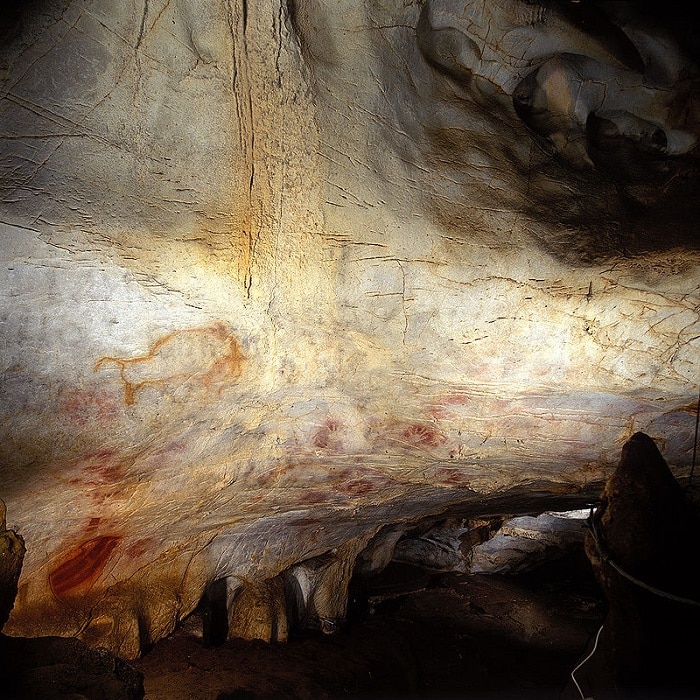
El Castillo Cave – known also as The Cave of the Castle – houses the world’s oldest cave paintings. It’s very oldest is a simple red disk shape, and it is believed that the art in the cave could have been done by Homo Neanderthals.
Apart from the red disk, other paintings present in the cave are hand stencils dating 37,300 years old and claviforms, which are essentially club-like shapes. Meanwhile, more images done in charcoal and red ochre span across the cave’s ceilings, dating back to the Lower Palaeolithic and Bronze Age.
The researchers responsible for dating most of the art in these caves were a team of British, Spanish, and Portuguese experts led by Dr Alistair Pike of the University of Bristol. They accomplished the task by dating the minerals and stalactites covering the paintings as they could not use the traditional method of radiocarbon dating due to a lack of organic pigment in the cave. This method gave them the minimum age of most of the cave art, and where larger stalagmites had formed, they were also able to obtain maximum ages.
2. Diepkloof Rock Shelter
Age: 60,000 years old
Oldest type of art: Engravings
Location: Western Cape
Country: South Africa
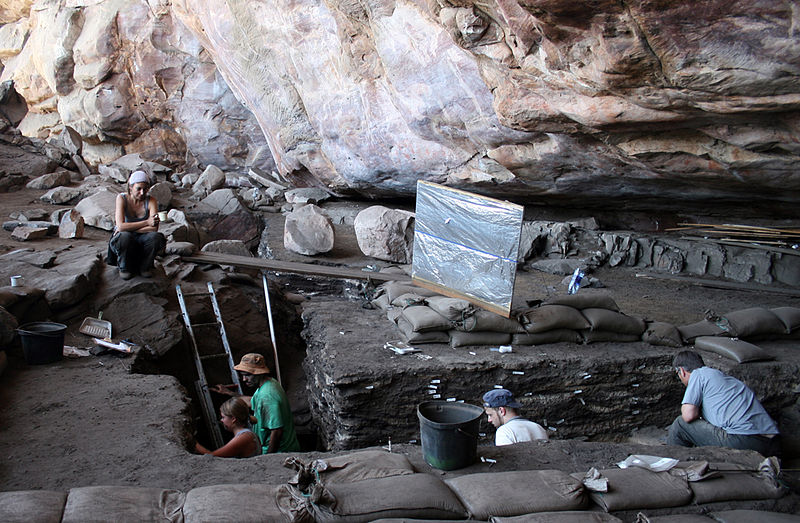
Before paintings, there were engravings. Diepkloof Rock Shelter was where around 270 fragments of containers made from ostrich eggshells were found, estimated to have originated from about 25 water containers.
The eggshells found contained engravings of a geometric style, with abstract linear patterns that repeat across the fragments. This is hypothesised to be a way to represent symbolically which container belonged to who, which would suggest a social and cultural system that has similarities to our modern social systems today.
Interestingly, the similarities and patterns across the eggshell fragments would suggest that there were rules for composing these patterns and designs, but that outside of those guidelines, creative liberties could be taken based on preference. It is also worth noting that due to the texture and hardness of ostrich egg shells, the engravings would not have been very easy to make.
1. Blombos Cave
Age: 100,000 years old
Oldest type of art: Engravings
Location: Southern Cape
Country: South Africa
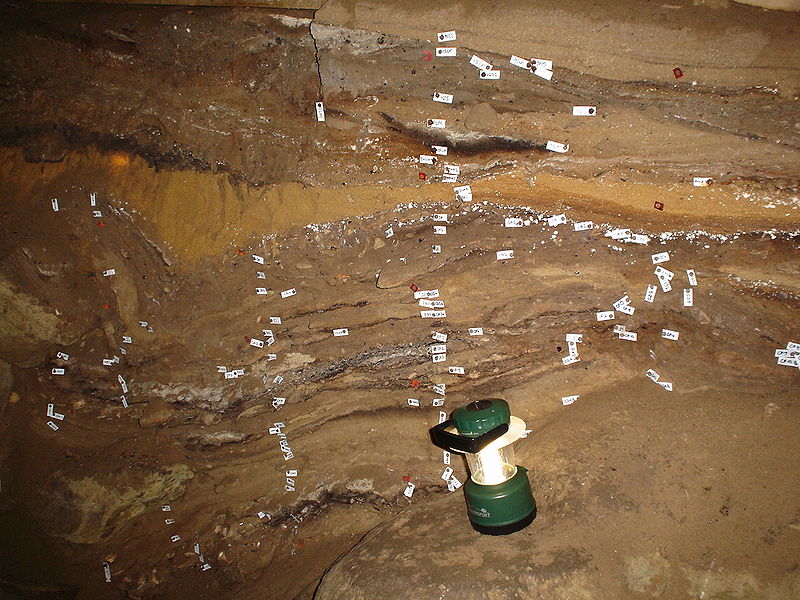
Blombos Cave is the site of the oldest known forms of prehistoric art, mainly centring around ochre, which is a kind of iron-rich mineral we’ve mentioned briefly throughout this list. In this cave, over 8,000 pieces of an ochre material were found, dating back to the Middle Stone Age.
Apart from appearing to be deliberately shaped for particular uses, some ochre pieces were also engraved with abstract designs in relatively complex patterns. Of these, the most famous are two ochre pieces discovered in 2002 that had finely engraved cross-hatched designs and parallel incised lines running across them. Six more of these geometrically carved ochre pieces were found in 2009. More of this style of pattern was found in engraved bone fragments within the cave. These engravings are the oldest form of abstract and conventional design tradition.
A processing workshop for this ochre was uncovered in 100,000 year-old areas of the cave in 2008, where liquefied, pigment-rich ochre was found stored in abalone shells. While there is no way to determine the substance’s exact use, some suggest it could have been used for painting purposes, though the paint could have been more for protection than design.


